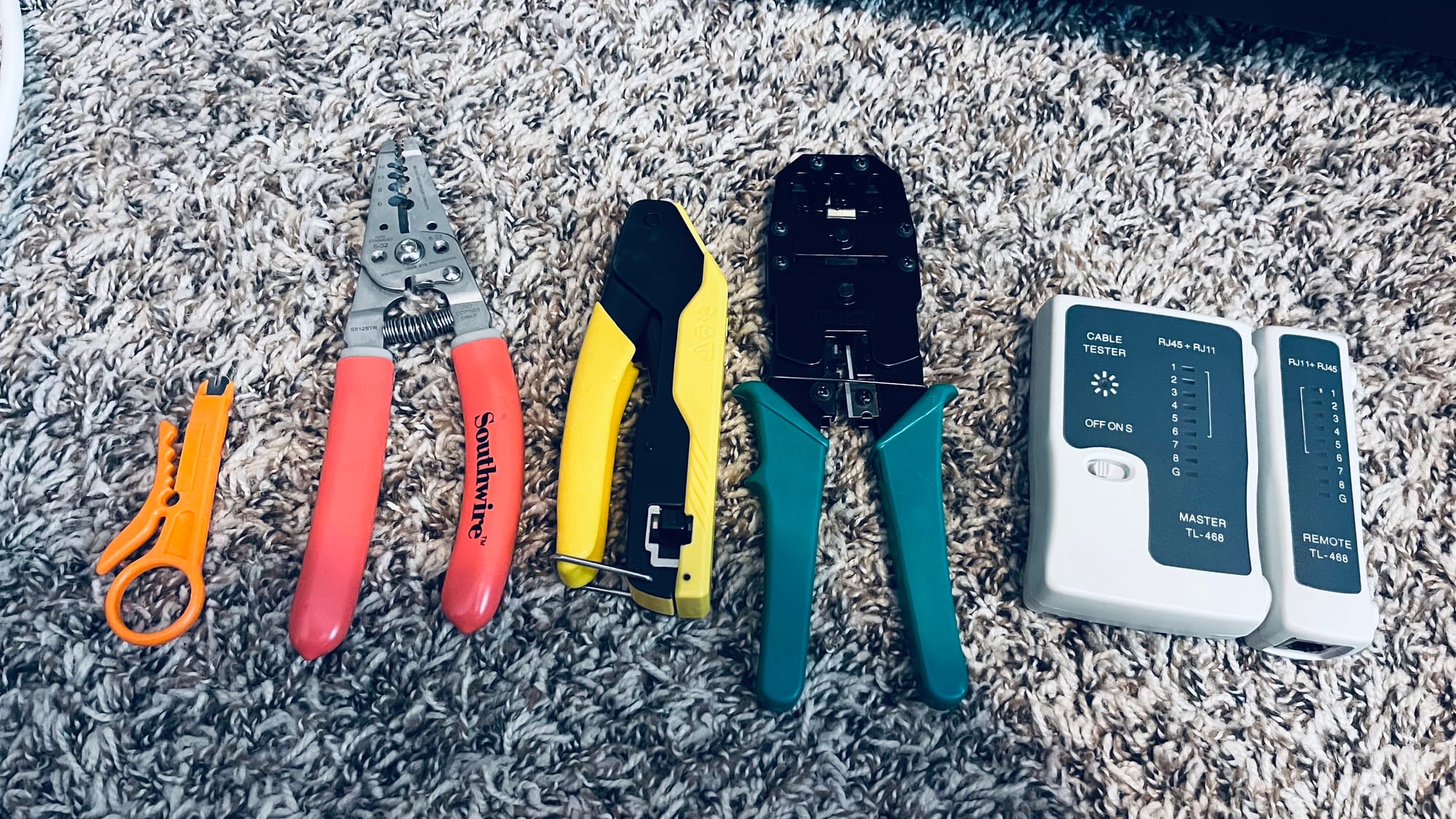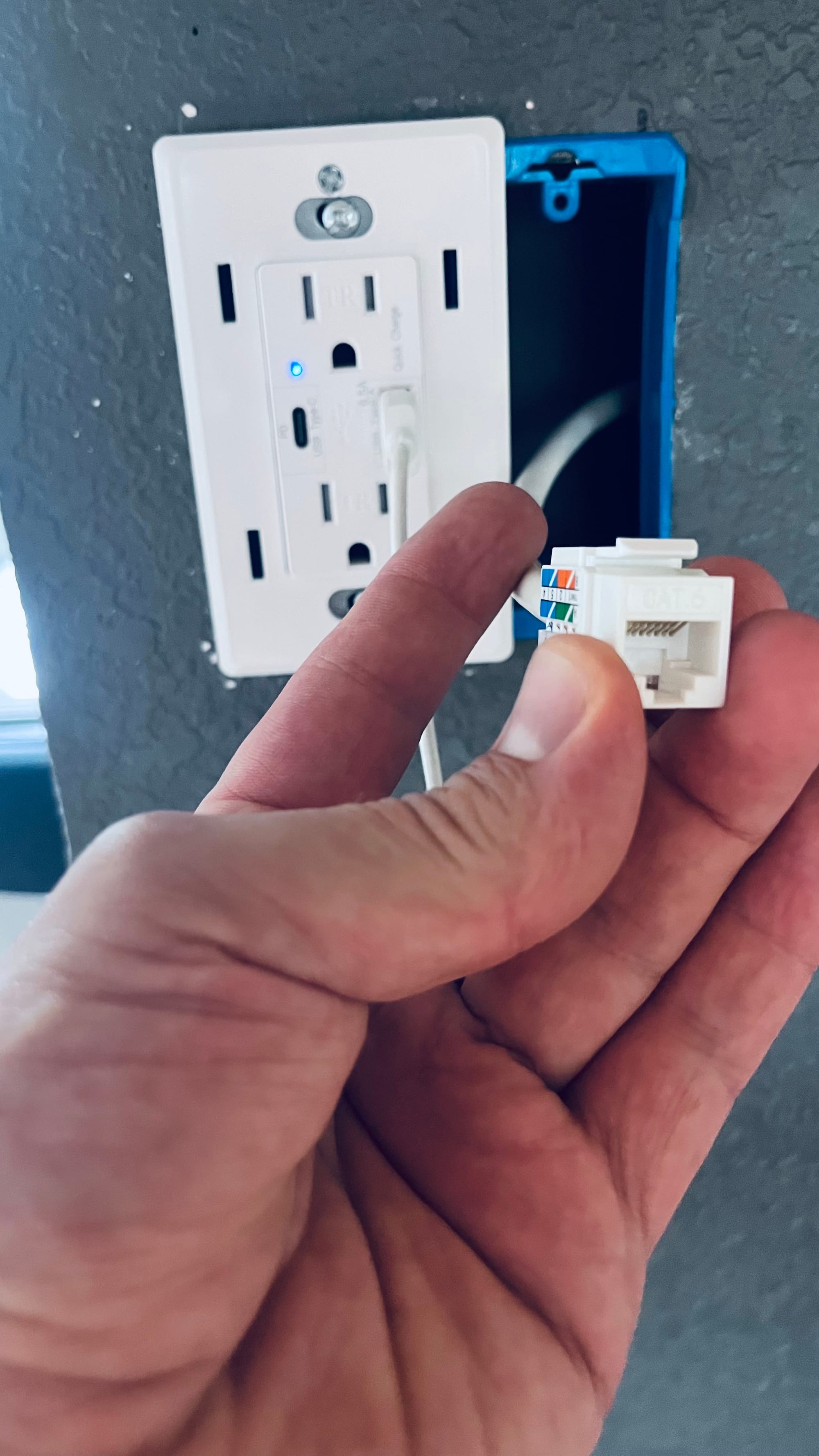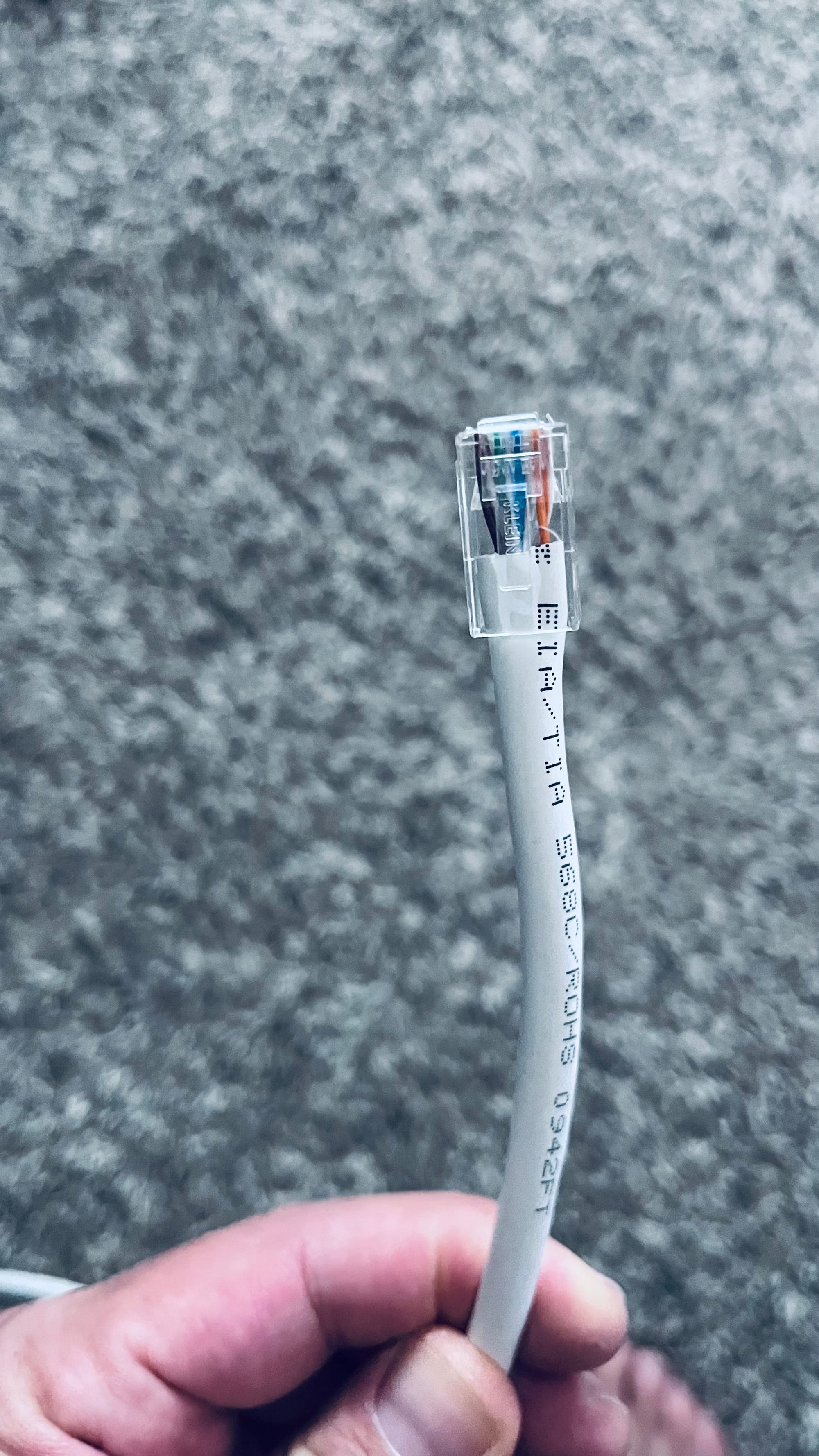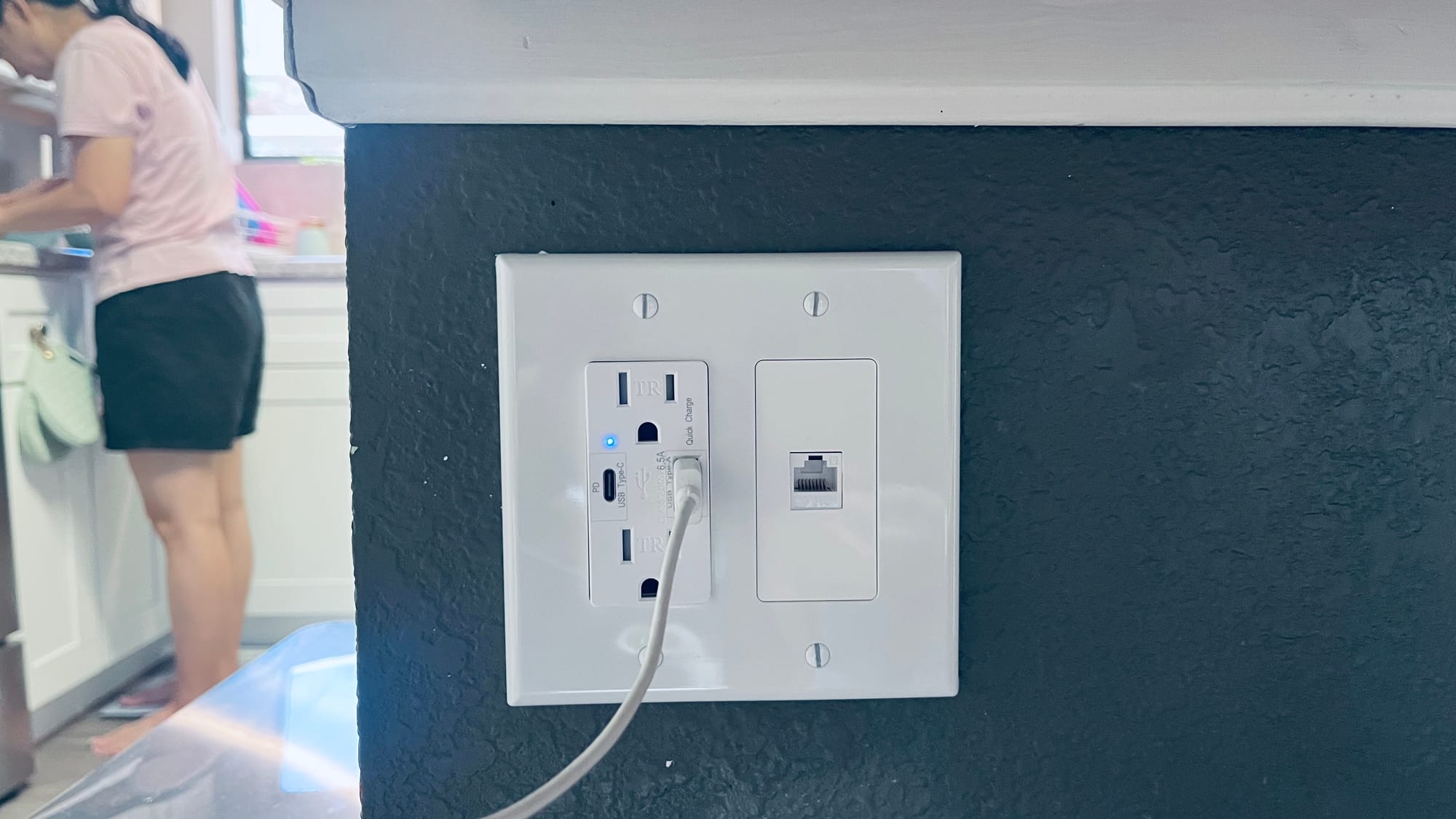From Spool to Internet

Hi. Today I was running some Ethernet cable when it dawned on me that there may be someone out there who finds use in a brief tutorial on this mundane task. I'm going to show you how to terminate RJ45 connectors.
Unfortunately, I didn't have a decent tripod to hand, so please excuse the awkward angle. Also, I left out the dragging of the cable through the crawlspace, as there really isn't enough light down there to make decent content; you will just have to use your imagination, I guess.
Why Cat6a?
On the end of the cable that I demonstrate, you will see a passthrough style RJ45 connector crimped to a Cat6a cable. A million, million years ago when I did my first-ever Ethernet cable run (I believe I was in 6th grade and fastEthernet at 100mpbs wasn't even a thing yet). That was Cat5e and is surprisingly still very capable for short runs. But as with all things tech, eventually every specification meets its end. If this house had had existing Cat5e, there may have been a bit more to deliberate, however, as there was no wired infrastructure when I moved in here, the choice to use Cat6a was a no-brainer.
Not only does Cat6a support higher bandwidth (10Gbps up to 100 m), it also allows for higher voltages for power over Ethernet (PoE) devices, such as CCTV cameras and even monitors—there is even a way to use the Ethernet cabling to provide power to a laptop or PC.
In a word, deploying Cat6a future-proofs my home network for whatever comes down the line. I can rest well, knowing that this will likely be the last set of Ethernet cables this house will need in my lifetime. Whether or not I ever take full advantage will tell in time. But you may not have access to the same quality of cable at the low price I found it. Really when it came to cable selection, the extra $6 was worth the cost for me.
The Demo
That said, here is a video of the crimping process. It's pretty straightforward. But keep in mind there are two different wiring standards. I use T568B. You can use whatever you like, but the standard must match on both ends of the cable.

If you made it this far and like what you see
- please consider supporting us
- share this content wherever appropriate and applicable
- jump in the comments and give us a shout out
- and subscribe for more

Keep us brewing!
Nothing good in IT ever happened without coffee.Thanks for your support!
Buy us a coffeeThe Tools

The Other Side

I apologize for the lack of video for this one, but the background noise was pretty bad. Perhaps, if there is enough interest in the future, I will make a quick tutorial on crimping keystone jacks—although that's pretty straightforward.
The Final
Here's how it looks, now that it's all finished up.


And now that everything is done, and the pain has been touched up, I hope you have a better idea of how to terminate Ethernet cabling in your own home.





